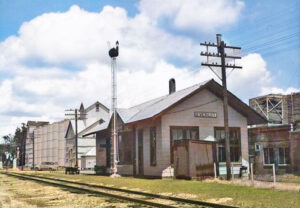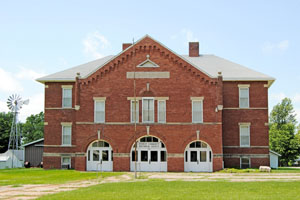Everest, Kansas, is a small town in Washington Township in south-central Brown County. As of the 2020 census, its population was 265, and its total area was 0.26 square miles, all of it land.
The large and spacious All Saints Catholic Church was built for $1,200 in 1868 and dedicated in the same year. Father Edmund was the first pastor of the church society.
Everest began in 1882 with the building of the railroad through that territory. The town was named in honor of Colonel Aaron S. Everest, an attorney for the Central Branch Union Pacific Railroad who represented Atchison County in the Kansas Senate.
By the early 1880s, Everest was a station on the recently completed Missouri Pacific Railway.
In 1882, the Catholic Church was expanded by 25 feet, making its dimensions 24×75 feet. It was surmounted by a handsome belfry and furnished with modern furniture. The church’s seating capacity was 300, and its membership was 500, composed of some of the area’s most influential and prominent families.
On June 23, 1882, the post office moved from Everton to Everest.
The same month, Willson B. May, the senior member of W.B. Way & Co., dealers in general merchandise, moved to Everest, where he erected his fine store building and warehouse. Carrying a stock of about $15,000, they were soon expected to sell $50,000 worth of goods each year.
E.W. Metzger, the senior member of Metzger & Co., dealers in groceries, provisions, flour, feed, books, stationery, and more, came from Nebraska to Everest with his family in September 1882. Later, he left the store in the hands of his son and was in charge of the extensive flouring mills at Everest.
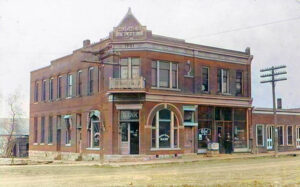
Old bank building in Everest, Kansas.
The two-story Farmers’ Elevator and Mill Company was erected in July 1882 for $6,000. Its storage capacity was 18,000 bushels, and the cribs attached to the elevator had a capacity of 20,000 bushels. Its working capacity was four cars per day, principally to the St. Louis markets. Herbert Charters was the manager. Headquartered at Severance in Doniphan County, it also had a mill in Willis.
The Marak Brothers removed their general store from Marak to Everest the same month. They soon became a popular growing firm in the town.
Seever & Andrew, the proprietors of Star Livery Stable, moved to Everest in February 1883 and built the building representing the livestock, feed, and sale business.
Everest’s population peaked in 1900 at 502.
In 1910, Everest had two banks, a money order office with two rural routes, metal stamping works, graded schools, a weekly newspaper called the Enterprise, telegraph and express offices, telephone connections, a hotel, Catholic and Methodist churches, and several well-stocked mercantiles. At that time, its population was 436.
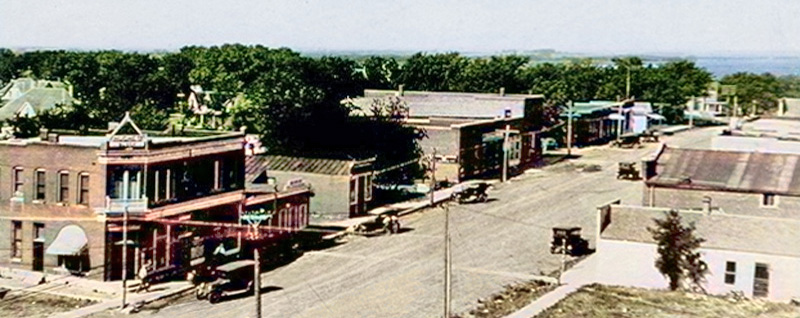
Everest, Kansas Main Street, early 1900s.
Everest is part of USD 430 South Brown County. Students attend elementary and high school in Horton and middle school in Everest.
Everest is about 19 miles southeast of Hiawatha, the county seat.
©Kathy Alexander/Legends of Kansas, updated July 2025.
Also See:
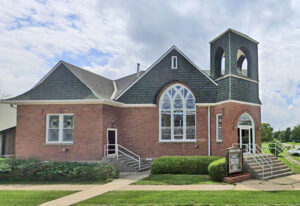
Christian Church in Everest, Kansas, courtesy of Google Maps.
Sources:
1884-1885 Official Kansas State Gazetteer and Directory, R. L. Polk & Co., Detroit, MI
Blackmar, Frank W.; Kansas: A Cyclopedia of State History, Vol I; Standard Publishing Company, Chicago, IL 1912.
Cutler, William G; History of Kansas; A. T. Andreas, Chicago, IL, 1883.
Wikipedia


